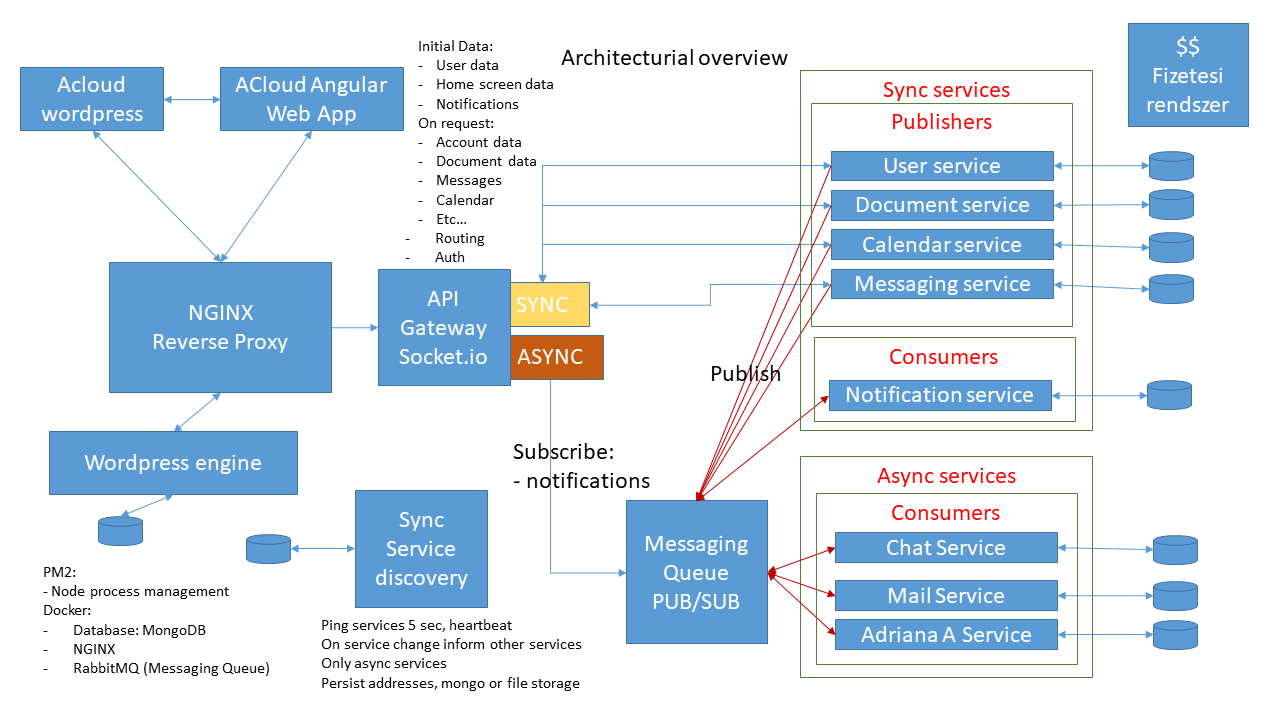The Benefits & Challenges of Microservices Architecture
The question is, why are microservices so helpful to modern enterprises? What benefits do corporations receive from using this architectural style? In this article, we provide an in-depth exploration of seven key benefits of microservices.

In the age of technology, businesses are experiencing a digital renaissance. Customers are interacting with companies through mobile devices and social media platforms more than ever, and they expect a higher level of service. This has forced businesses to re-evaluate how they operate to meet customer demands. One such way companies are changing the way they work is by adopting the benefits of microservices. The question is, why are microservices so helpful to modern enterprises? What benefits do corporations receive from using this architectural style? In this article, we provide an in-depth exploration of seven key benefits of microservices.
But first, we’ll briefly define microservices to bring newcomers up to speed on this technology. Microservices architecture is a software design pattern that helps break down an application into smaller, more manageable pieces. This type of architecture has gained popularity in recent years because it offers several benefits over traditional service-oriented architecture (SOA) implementations. In this blog post, we will explore the benefits of microservices architecture, the challenges of implementing it, and how AWS implements it. We'll also take a look at some tips for making microservices work in your own environment.
What Are the Benefits of Microservices?
Microservices application architecture involves breaking a monolithic application into component functions or services that are independently deployable and can communicate with each other without sharing code. Each service has its own benefits, but the benefits of microservices architecture become more clear when they are synthesized into one cohesive system.

So, we create a “short” Top 7 list of the benefits of using Microservices architecture.
- Improved scalability: One of the benefits of microservices is improved scalability as it allows independent services to scale up or down depending on demand. This makes applications more resilient in the face of high traffic spikes since individual services can be scaled up quickly to handle the additional load, while other services remain steady. This helps organizations save on costs by not having to maintain excess capacity for peak times.
- Easier debugging: Because each service runs independently, if a problem arises it's much easier to troubleshoot and identify the source of the issue. Bugs can be quickly isolated to one service, making it easier to debug and fix than a monolithic application with many moving parts.
- Improved security: Microservices architecture allows developers to secure individual services instead of having to protect an entire application at once. This helps reduce attack surfaces since each service can be separately secured with its own authentication and authorization systems.
- Accelerated development cycles: By breaking down large applications into smaller manageable chunks, teams can work on independent services in parallel, which leads to faster release cycles and quicker time-to-market for new features or products.
- Greater flexibility: With a microservices architecture, businesses have more freedom when it comes to updating their applications. Services can be updated, changed, or replaced with new ones more quickly and easily than in a monolithic application, so organizations can stay up to date with technology faster and cheaper.
- Improved team collaboration: By breaking down complex problems into smaller chunks, teams are able to focus on specific tasks that match their individual strengths and skill sets. This helps teams work together more efficiently as tasks can be delegated based on experience and expertise.
- Reduced costs: Finally, microservices architecture helps reduce costs since bugs and errors are easier to identify and fix without having to go back through the entire codebase of an application. This saves time and money for businesses by reducing the effort spent on debugging and testing large applications.
What Are the Challenges of Implementing Microservices?
While microservices offer considerable benefits to businesses, there are also some challenges that need to be considered when deciding whether to use this type of architecture. These include:
- Increased complexity: One of the biggest drawbacks of microservices is that they can add more complexity in terms of managing and deploying different services, as well as testing for bugs across multiple services. This complexity can increase development time and introduce additional points of failure.
- Vendor lock-in: As businesses start to rely on specific vendors for their microservice implementations, they become dependent on those vendors which could result in vendor lock-in where switching or using a different solution becomes prohibitively expensive.
- Data management: Another challenge with microservices is data management as different services may need to communicate and interact with each other constantly, often across multiple locations. This can lead to complicated synchronization problems that must be managed carefully in order to ensure data consistency across all services.
How Amazon Implements Microservices?
Here is a great example of how Amazon implements Microservices Architecture.
Amazon is one of the leading companies using microservices architecture for its core business operations. The company uses service-oriented architecture (SOA) which allows teams working on individual services to develop, test and deploy their code independently without having to coordinate with other teams. This makes it easier for developers to focus on their own tasks without worrying about breaking someone else's work when making changes or updates.
Amazon also uses a combination of various event-driven architectures, such as Apache Kafka and Amazon Kinesis Streams, to handle communication between multiple services and allow them to react quickly to events triggered by user actions. This helps ensure that all services stay up-to-date with the latest changes made across the application. Finally, Amazon leverages its own cloud computing infrastructure, Amazon Web Services (AWS), to manage and deploy its microservices efficiently.
Best Practices for Building Microservices
Microservices can be complex to build and deploy. Here are some best practices for building and deploying microservices to avoid common pitfalls and get the most out of this architecture.
- Use version control: Version control systems such as GIT can help manage the complexity of multiple services by providing a central repository for tracking changes and keeping track of all updates made to individual services.
- Leverage containers: Containers enable service isolation which prevents services from impacting each other when deployed on the same server or cloud instance. This makes it easier to quickly scale up or down as needed, while also ensuring that resources are being used efficiently across different services.
- Automate deployments: Automating deployments helps ensure that new versions of the software are deployed quickly and consistently across different environments with minimal manual effort, reducing risk and speeding up development cycles.
- Monitor performance: Performance monitoring is critical for microservices as it enables teams to quickly identify and address any issues within a service before they impact the user experience.
- Test consistently: Automated testing is essential in ensuring that different services work together correctly when making changes or adding new features. This allows teams to quickly test, debug and deploy bug fixes across different environments with minimal effort.
7 Advantages of Using Microservices from business perspective
- Faster time-to-market: Breaking down a monolithic application into smaller, independent services make it easier and faster to develop, test and deploy new features to production since each service can be worked on independently without impacting other services.
- Increased scalability: Services can be scaled up or down independently to meet the demand of different user requests, allowing organizations to optimize resource utilization and reduce operational costs.
- More efficient development: By breaking down an application into smaller services, developers can focus on their specific tasks and make changes quickly without worrying about other teams or services. This significantly speeds up the development process.
- Improved fault isolation: If a service fails, it won’t affect other services so users will still be able to access the application with minimal disruption or downtime.
- Efficient resource utilization: Different services can run on different servers or cloud instances, enabling optimal resource allocation for each service which helps improve the overall performance and scalability of the application.
- Easier maintainability: By decoupling different services, teams can easily update and maintain each service independently without having to worry about other parts of the application.
- Better engineering tools and practices: Leveraging containers, automation, and version control systems make it easier for development teams to ensure all services are up-to-date with the latest changes. This helps improve overall code quality and reduce risk when making frequent updates.
Microservices architecture is quickly becoming one of the most popular software architectures today due to its benefits such as increased scalability, faster time-to-market, better fault isolation, and more efficient resource utilization. Amazon Web Services provides a powerful platform for deploying microservices applications in a secure and reliable manner, making it an attractive option for organizations looking to deploy and scale microservices applications. In addition, AWS provides the tools and services needed to build, deploy, test, and monitor microservices applications in a cost-effective manner. By leveraging containers, automation, version control systems, and other engineering practices, organizations can take full advantage of AWS’s powerful capabilities to deliver high-performance microservices applications with minimal effort.
Service-oriented architecture (SOA) is similar to microservices architecture but with a few differences. Unlike SOA which focuses on providing an abstract service layer between different application components, microservices focus on developing independently deployable services that are loosely coupled yet highly cohesive. This approach enables teams to develop faster, scale better, and have greater flexibility when making changes.
Overall, microservices architecture is a great option for organizations looking to develop, deploy and scale applications quickly and efficiently. By leveraging AWS, teams can take advantage of powerful capabilities to deliver high-performance applications with minimal cost and effort. With the benefits provided by both microservices architecture and SOA combined with the power of AWS, organizations can be sure that their applications will remain stable, secure, and highly performant regardless of user demand or workload.
In conclusion, microservices architecture can provide organizations with significant benefits and improved performance compared to traditional application architectures. With the help of AWS, teams can leverage powerful tools and services to develop, deploy and scale applications quickly and easily. By using both microservices architecture and SOA combined with AWS’s powerful capabilities, organizations can rest assured that their applications will remain stable, secure, and highly performant regardless of user demand or workload.
Contact us for more examples of choosing direction when you arrive at a software development crossroads, and other insights about utilizing Machine Learning in the startup world and beyond!

